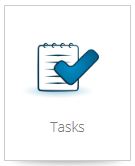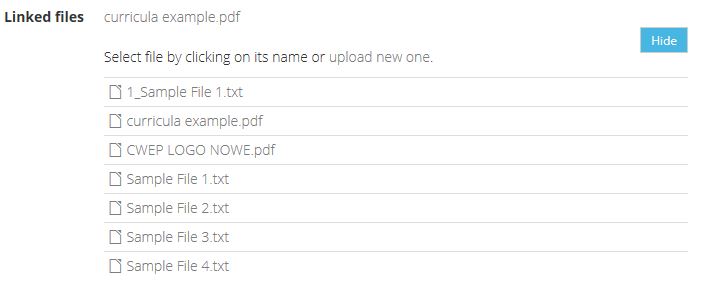Project design provides a wide scope of what needs to be achieved, when and how. When it comes to actual action, everything can be broken down to simple organic activities that are represented in AdminProject by Tasks. What follows is a simple walkthrough on how to use tasks.
Don’t underestimate the power of Tasks module! This is probably the most comprehensive piece of code we have right now and while tasks are not explicitly defined in any project proposal, they are the means of achieving your goals, producing deliverables and completing milestones. How does it work?
Anyone, usually the Project Coordinator, or a Partner responsible for a specific WP, can assign a task to a specific person or persons. People assigned to the task can attach files needed for completing the task and can monitor task progress and make comments. When the person assigned to the task completes it or just makes some progress, they can move the handle on their progress bar to reflect their actions.
Sounds complicated? It isn’t. After you grasp the idea it will feel like an old habit.
To get started, click Tools tab and then Tasks button.

You will be presented with a list of tasks divided into four parts:
– My – tasks which are assigned to you. Usually, it means you need to do some work there unless you are an observer, but more about that later.
– Delegated – tasks which you have assigned to others. Meaning: they need to do something. Very useful for checking how your team is doing.
– All – means all the tasks in the project.
– Approved – tasks which have been finished and accepted by the assigning person. Think of it as an archive.
In case your list goes on and on forever, there is help available; click on filters item in the top-right corner. It will allow you to see only those in which you are interested in at the moment.
Right, now let’s move on create and assign a new task. We’ll give Richard a task to create course curricula, giving him a sample file and one week to do that. To explain each section of the form, we’ll break them into pieces. First you need to name your task, obviously, the field for that is the first from the top.
Date fields are pretty self-explanatory as well. Assigned by is just you, one that creates the task. The next field, Part of WP allows you to select a Work Package where this task should be assigned to (Work Packages should be defined beforehand). Read about Work Packages here. The right part of this form lets you select the task Priority, which is not formalized, but gives you a possibility to choose from three levels of importance. Task approval and progress is comes into play after the task is created, Progress will be changed when assigned person will do the work or at least part of it, this person will have possibility to indicate that some part of work, let’s say 50%, is done. You as task creator will be notified. Task Approval is the final thing which needs to be done after the assigned person completes their work, you’ll review it and if you are happy with the results, than you can approve the task. This will also ‘close’ the task.
But before that, there is still few things to be done:
Very important part of defining a new task: you need to assign people to do the job. Click once on persons’ avatar or name, make someone responsible for the task. Click twice to toggle the state of the user to observer, who is a person not directly involved in the task, but they need to be informed. You can assign as many people as you like, or in practice, as many people as you have in the project.
The next field – Description – is easy enough, just type in whatever you feel needs to be known about the task.
Finally, a task can be accompanied by a file or files. Both when creating, but also when completing work. Meaning, you don’t need to look for files with results, they are just below other fields in the task. Brilliant, huh? Just click Manage in the Linked files section to attach a file:
Click on a file name to attach it. You can attach multiple files if needed.
That covers most of aspects of creating and assigning a new task, hopefully this post will make things easier for you.



